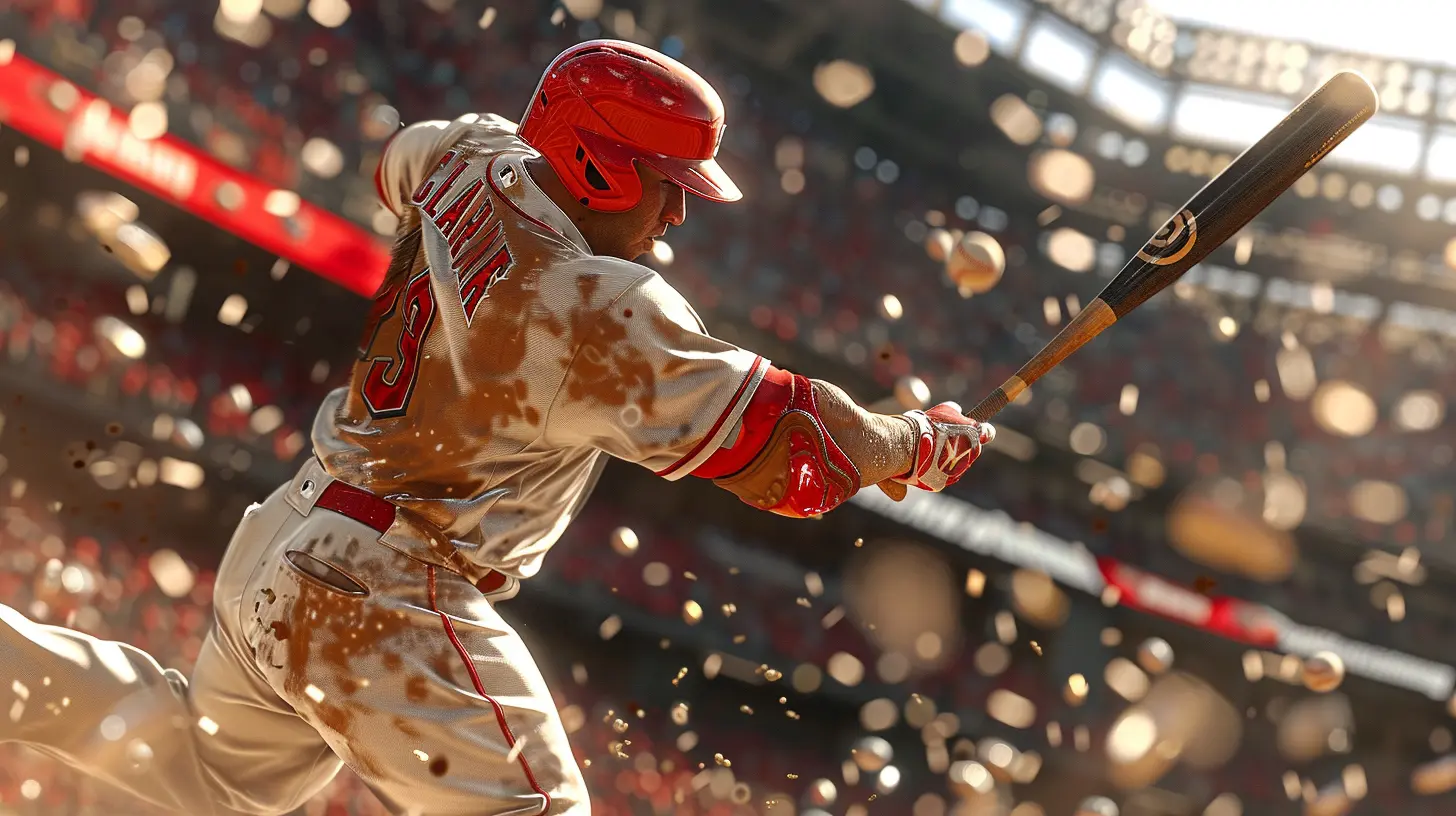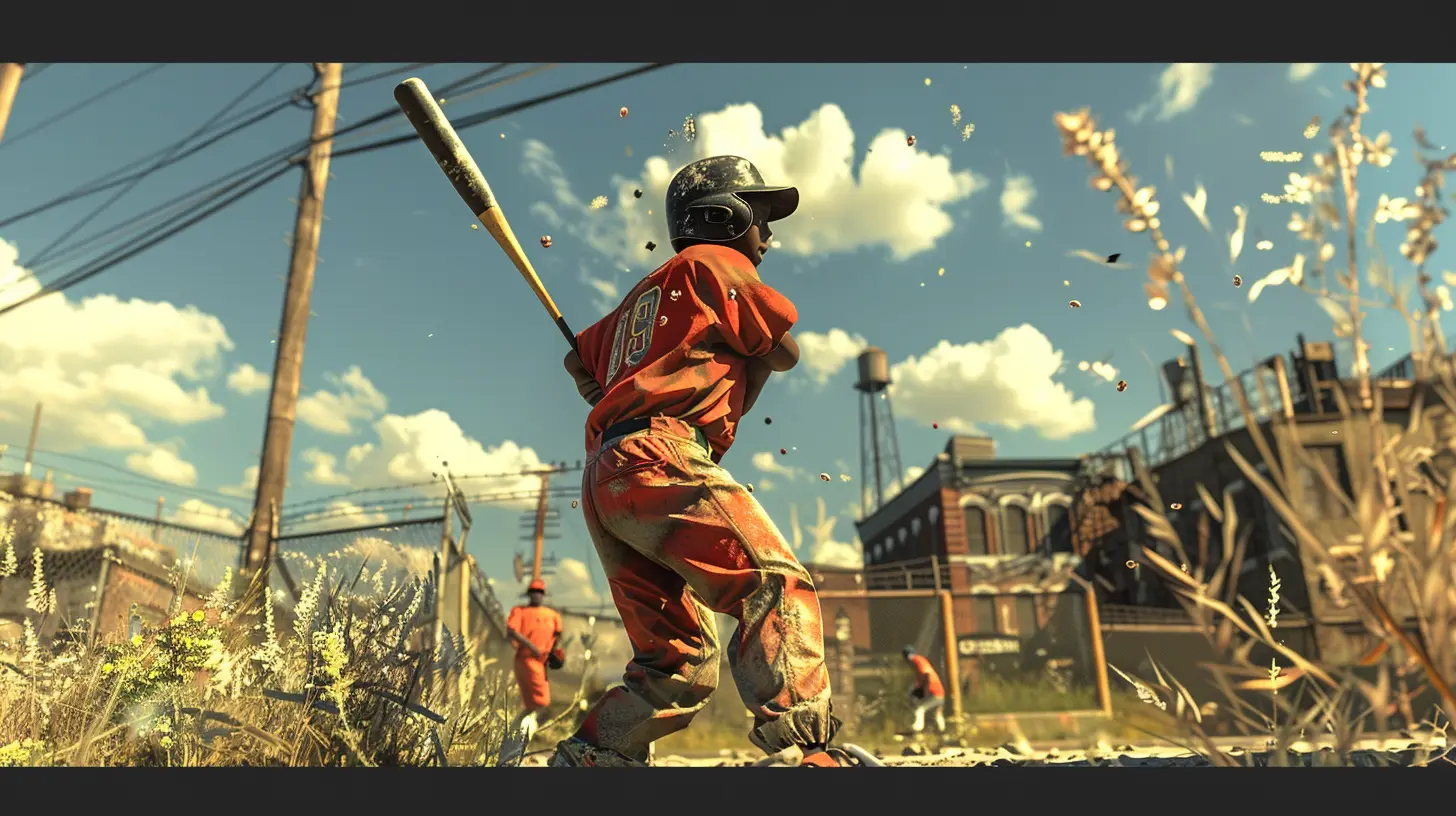Exploring the Physics of Baseball in Video Games
5 May 2025
When it comes to sports games, baseball holds its own unique charm. There's something thrilling about the crack of the bat, the arc of the ball soaring through the air, and the nail-biting suspense of a close play at the plate. But have you ever stopped to think about how video games manage to replicate all this so convincingly? Specifically, how do they capture the physics of baseball? Let's take a closer look at what goes into making digital baseball feel so... real.
The Importance of Physics in Baseball Video Games
Physics is the secret sauce that makes everything click in a baseball video game. Without it, you'd end up with a weird, floaty mess that feels more like a bad dream than America's favorite pastime. When developers get it right, though, physics ensures that everything—from the ball's trajectory to the player's movements—feels natural and satisfying. After all, we’ve all played games where something just felt “off,” haven’t we? Often, that comes down to the underlying physics engine not doing its job properly.From the speed of a fastball to the spin of a curveball, every little aspect relies on physics to mimic the real-world experience. And let’s be real, when you hit that perfect home run in a game and watch the ball soar into the virtual stands, you feel like a champion. That’s physics working its magic. 
Ball Trajectory: Not Just a Straight Line
In real life, a baseball doesn’t travel in a straight line—and video games go to great lengths to replicate this. When a batter makes contact with the ball, several factors come into play, like the angle of the bat, the ball’s speed, and even the weather conditions. Yes, some advanced baseball games simulate wind and air resistance to make the ball behave realistically. Nuts, right?Ever notice how in games like MLB The Show, different types of pitches behave differently? A fastball flies straight and true (because it’s moving so darn fast), while a curveball takes on a mesmerizing arc. All of this is calculated using high-level physics models that account for spin rate, gravity, and drag.
To make this even geekier (but in a good way), some games simulate something called the Magnus Effect. This is when the spin of the ball creates a pressure difference, causing it to curve mid-air. Yeah, it’s as complicated as it sounds—but it’s this kind of detail that separates casual sports games from the ones that keep you hooked for hours.
Batting Mechanics: Timing Is Everything
Have you ever wondered why hitting a home run in a video game feels so insanely satisfying? It’s not just because you crushed it—it’s because the game’s physics engine has nailed the interaction between the bat and the ball.Good baseball games use collision detection to determine what happens when your bat meets the ball. Timing, angle, and speed all play a crucial role in determining whether you’re sending it into the bleachers or grounding out to first base. It’s like trying to thread a needle, but with a digital bat and a ball traveling at 90 mph. No pressure, right?
Interestingly, some games even simulate different types of wood bats! The material and weight can influence the ball’s exit velocity (how fast it leaves the bat). While it might sound like overkill, it’s these tiny details that make hardcore fans geek out over getting the timing just right. 
Pitching: The Chess Game of Baseball
In baseball, pitching isn’t just about throwing hard—it’s a psychological chess match between the pitcher and the batter. Video games try to capture this dynamic, but they also have to consider the physics of pitching.When you throw a fastball in a video game, the physics engine calculates its velocity, spin rate, and the effect of drag as it travels toward the plate. A slider, on the other hand, has a totally different motion path because of its spin. Developing this kind of realism isn’t easy, but it’s what separates polished games from shovelware (you know, those cheap games you regret buying).
Some games even let you aim pitches down to the smallest detail, considering things like pitcher fatigue and finger placement. It’s mind-blowing when you think about it—developing one realistic pitch might take developers weeks of fine-tuning physics models.
Fielding and Throwing: The Unsung Heroes
Let’s not forget fielding and throwing—because if you’ve ever tried to throw out a runner at home in a video game, you know how exhilarating that can be. Fielding isn’t as simple as running to the ball and mashing buttons. Instead, modern games use physics to determine how players move and throw.Think about it: a player sprinting at full speed isn’t going to throw with the same accuracy as someone standing still. This is where mechanics like momentum and inertia come in. Developers have to create animations and physics systems that reflect these nuances so the game feels authentic.
And it’s not just about throwing; catching the ball has intricacies too. For example, players use collision physics to decide whether the ball makes it into the glove or bounces off awkwardly. Fielding errors in games might seem like bad luck, but they’re actually carefully calculated based on the player’s position, momentum, and timing.
Crowd Dynamics: A Subtle Yet Important Detail
Okay, this might seem like a tangent, but hear me out. The physics of baseball in video games extends beyond just the players and the ball; it’s also about the environment. And one of the most underappreciated aspects? The crowd.When you smash a grand slam in games like Super Mega Baseball 3, the way the crowd reacts can actually enhance the experience. Developers use sound physics and crowd animation algorithms to simulate how sound travels in the stadium, making the roar feel immersive. This might not be the “physics of baseball” in the traditional sense, but it plays a role in how believable everything feels.
The Challenges of Replicating Realism
Here’s the thing—no matter how advanced video games get, it’s virtually impossible to achieve 100% realism. Why? Because real-world physics is insanely complex. In baseball, tiny variables can have a massive impact. Did the wind shift slightly? Was the ball hit with slight backspin?Developers have to simplify some aspects of physics to make games playable. After all, we don’t want to spend three hours watching a detailed physics simulation—we want to play ball! Still, the best baseball games strike a balance between realism and fun, giving us just enough detail to keep us engaged without overwhelming us.
The Future of Baseball Physics in Games
Looking ahead, the future is bright for baseball video games. With advancements in machine learning and artificial intelligence, we’re likely to see even more accurate physics engines. Imagine a game that not only simulates every spin and bounce of the ball but also adapts to your playing style.Virtual reality (VR) is another exciting frontier. Imagine stepping into the batter’s box in a VR game and watching the ball fly toward you at 95 mph. The physics would need to be spot-on to avoid making you feel like you're standing in a glitchy cartoon.
And let’s not forget the potential of haptic feedback. With consoles like the PS5 offering advanced vibration features, you could feel every crack of the bat or thud of the ball in your glove.
Closing Thoughts
When you really think about it, baseball video games are a marvel of modern physics. The way they simulate everything from pitch speed to ball trajectory is nothing short of amazing. Sure, they may not be perfect, but they’re getting closer with every new release. So the next time you step up to the plate in your favorite game, take a moment to appreciate the insane amount of effort that went into making it feel so lifelike. Because behind every digital pitch, swing, and catch lies a world of physics that’s more fascinating than we often realize.all images in this post were generated using AI tools
Category:
Sports GamesAuthor:

Madeleine McCaffrey
Discussion
rate this article
4 comments
Macey Gonzalez
This article offers a fascinating look at how video games replicate baseball's intricate physics. From pitch dynamics to player movement, the attention to detail enhances realism and gameplay. It’s intriguing to see how developers balance fun with authentic physics, making virtual baseball both entertaining and immersive.
May 15, 2025 at 3:25 PM

Madeleine McCaffrey
Thank you for your thoughtful comment! I'm glad you found the exploration of physics in video games engaging—it's a testament to how technology can elevate our gaming experience.
Gabriella McMurtry
In digital diamonds, physics dance, With every pitch, a fleeting chance. Gravity's pull and friction's grace, Craft a virtual player's embrace. Swinging sprites in twilight's glow, Baseball's magic, pixelated flow, In this realm, true legends grow.
May 13, 2025 at 3:28 PM

Madeleine McCaffrey
Thank you for your poetic take! You've beautifully captured the essence of how physics enhances the immersive experience of baseball in video games.
Peyton Wade
Love how games capture baseball's physics! Pure joy to play!
May 12, 2025 at 5:08 AM

Madeleine McCaffrey
Thank you! I'm glad you enjoyed the exploration of how game physics bring baseball to life. It truly enhances the experience!
Wendy Nelson
This article brilliantly highlights how video games capture the intricate physics of baseball, enhancing realism and player experience. A must-read for fans of both baseball and gaming!
May 6, 2025 at 4:11 AM

Madeleine McCaffrey
Thank you for the kind words! I'm glad you enjoyed the article and found the connection between baseball physics and gaming intriguing.


